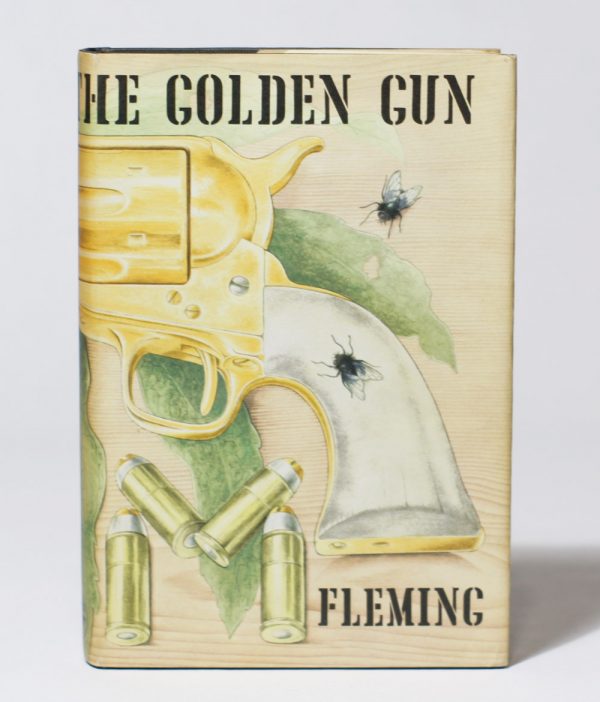Add to Wishlist
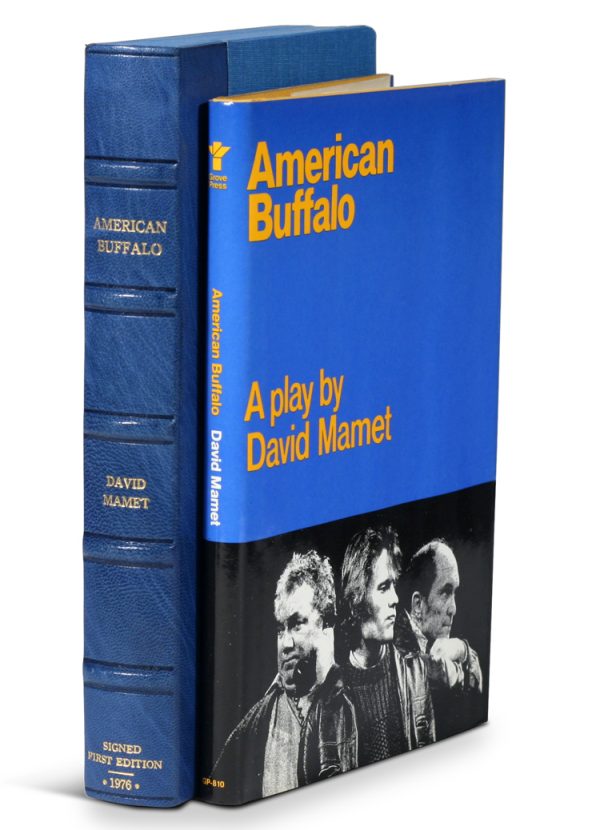
First edition, signed by David Mamet
American Buffalo
New York, 1976FIRST EDITION, hardcover issue, SIGNED BY MAMET on dedication page.
Winner of the 1976 Obie Award and the New York Drama Critics’ Circle Award for Best American Play of 1977; made into a 1996 film starring Dustin Hoffman.
Octavo, original yellow cloth, original dust jacket; custom half-morocco box. A FINE COPY.
- $1,400.00
Add to Wishlist
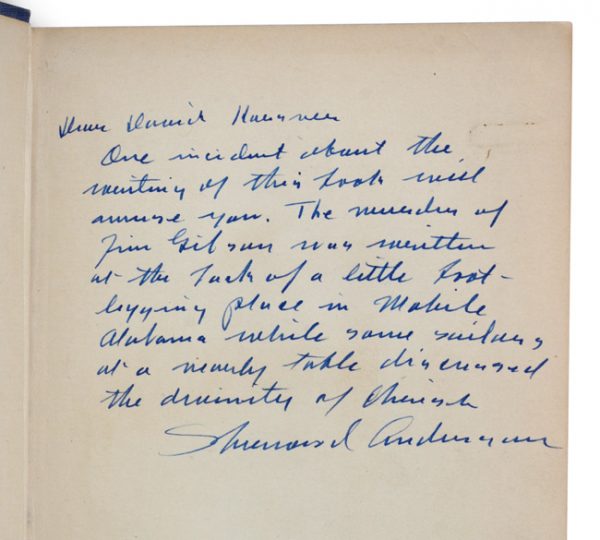
First edition, with a lengthy inscription by Sherwood Anderson
Poor White
New York, 1920FIRST EDITION, INSCRIBED AND SIGNED BY SHERWOOD ANDERSON.
“Dear David… One incident about the writing of this book will amuse you. The murder of Jim Gibson was written at the back of a little boat-laying place in Mobile Alabama while some sailors at a nearby table discussed the divinity of Christ. Sherwood Anderson.”
Octavo, original blue cloth. Dust jacket lacking. Spine sunned, light wear at spine head. A handsome copy with a superb inscription.
- $750.00
Add to Wishlist

First edition, inscribed by John Fante
Wait Until Spring, Bandini
New York: , 1938FIRST EDITION, INSCRIBED on the front endpaper. “For Miss Fowler, who taught me all about radio, –– with all good luck / John Fante”
Octavo, original cloth, dust jacket. An excellent copy in a superb dust jacket with only minor toning to rear panel.
- $5,000.00
Add to Wishlist

Signed by Walt Whitman
As a Strong Bird on Pinions Free, and Other Poems
Washington, D.C. , 1872FIRST EDITION, SIGNED BY WHITMAN.
“As a Strong Bird on Pinions Free”, before becoming the final addition to the final edition of Leaves of Grass, was published independently by Whitman in 1872, twenty years before the poet’s death. The title poem was written as a commencement for Dartmouth College as one of the few pieces Whitman recited publicly.
With large Whitman signature across title page. Octavo, original dark green cloth; custom half-morocco box. Minor discoloration to pastedowns. a little fraying to spine ends and corners.
- $7,500.00
Add to Wishlist
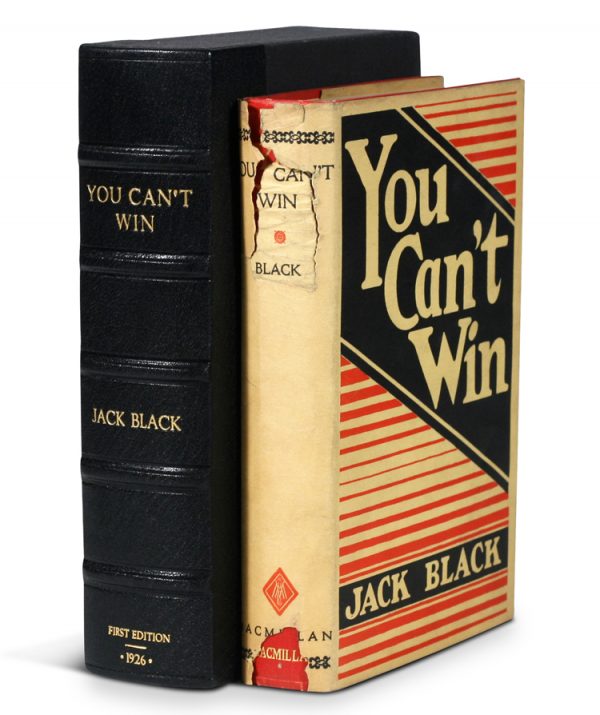
You Can’t Win
New York, 1926“The tone of the ‘beat’ world, as Burroughs first perceived it, chimed with the world of Jack Black.” –James Campbell, This is the Beat Generation
FIRST EDITION of Black’s influential autobiography; with the extremely rare original dust jacket. This book is often hailed as the first “Beat ” book.
The memoir of a notorious thief, vagabond, and ‘honorable’ outlaw, You Can’t Win was a bestseller upon its publication in 1926. It would become a favorite book of William S. Burroughs (whose “Junkie” is modeled after it) and with its depiction of a free, loose, nomadic lifestyle, become one of the most influential works for the Beat movement.
Burroughs claimed that, in his representation of the dying days of the Wild West, Jack Black “has recorded a chapter of specifically American life that is now gone forever,” a way of life that Burroughs, Jack Kerouac, Allen Ginsberg, and others would try to adapt and re-create for their own generation.
Octavo, original cloth, original dust jacket; custom box. Early owner signature on front endpaper. Book fine, dust jacket shows wear at spine, with large chip at tail. Scarce in dust jacket.
- $7,500.00
Add to Wishlist
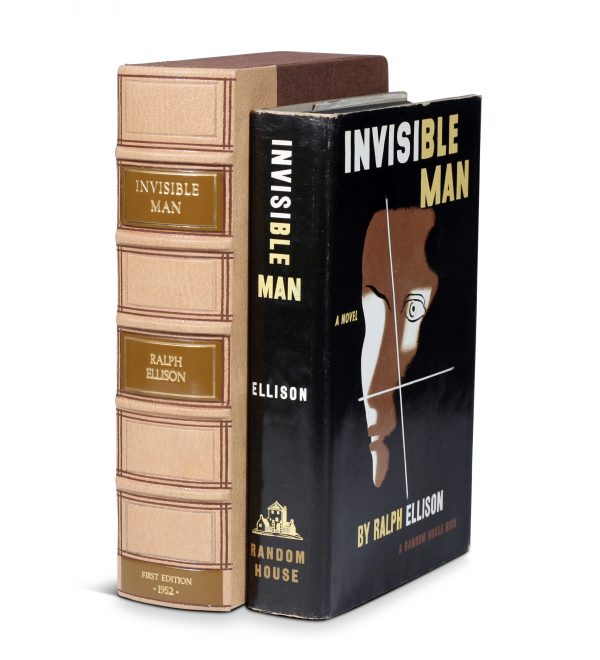
Invisible Man
New York, 1952FIRST EDITION of Ellison’s first book, winner of the 1953 National Book Award for Fiction. A fine copy.
Ellison’s “importance as a writer was established by his first novel, Invisible Man, published in April 1952. Immediately acclaimed by critics, it was recognized not merely as an excellent novel by a black author, but as a great literary achievement. In The Negro Novel in America, Robert Bone called Invisible Man ‘quite possibly the best American novel since World War II.’ Also well received by general readers, the novel spent sixteen weeks on the New York Times bestseller list” (American National Biography).
Octavo, original beige cloth, original dust jacket; custom half-morocco box. A fine copy.
- $8,000.00
Add to Wishlist

Signed by Ken Kesey
One Flew Over the Cuckoo’s Nest
New York, (1962)FIRST EDITION, SIGNED BY KEN KESEY.
Octavo, original cloth, original dust jacket. First issue dust jacket (with Kerouac’s blurb on front flap). Owner signature at front pastedown. A nearly fine copy in very lightly toned jacket with trivial wear at spine ends and small waterstain at inside front flap. An excellent copy signed by Kesey on the front free endpaper.
- $8,000.00
Add to Wishlist

Scarce Review Copy of Kerouac's On the Road in Fine Condition
On the Road
New York, 1957FIRST EDITION, of the defining work of Beat literature. Scarce review copy, with stiff review card laid-in.
“Kerouac’s literary art bore no resemblance to the undisciplined ‘beatnik’ writing of the late 1950s. His extraordinary attention to detail, astonishing memory, and encyclopedic grasp of European and American literature, popular culture, and world religions enabled him to create densely textured narratives that, when read aloud as they were meant to be, achieved an incantatory dimension rarely experienced in modern literature” (American National Biography). On the Road was Kerouac’s first work—and in fact the first work in American literature—that exemplified this “literary art”.
While most critics dismissed the novel as “self-indulgent, irresponsible, or dangerous”, “it created an instant literary sensation” (ibid.). At the time of its publication, it was one of the few books that perfectly captured the zeitgeist of the post-war years and echoed it back to the rest of the country, amplified and embellished, to create something eternally contemporary. “Now more than ever, it seems, reading Paradise’s tale brings out the questing young wanderer in many a reader, no matter one’s age, gender, nationality, or predilection for all things Beat” (Holiday).
Octavo, original cloth, original dust jacket; custom half-morocco box. With advance review slip laid-in. Book fine, dust jacket in outstanding condition with a few flecks of rubbing; also a small patch of dampstaining visible on verso only. A superb copy with the extremely rare review card.
- $20,000.00
Add to Wishlist
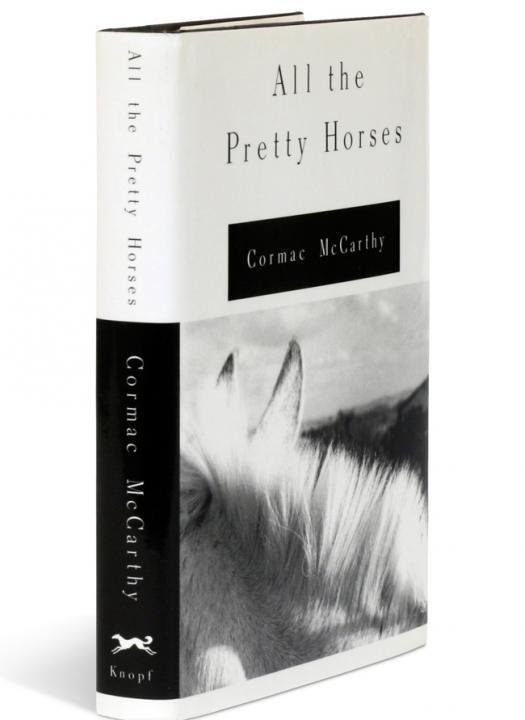
All the Pretty Horses
New York, 1992“When you read this book, from page one you feel a threat following you, some animistic urging that keeps you going by the way McCarthy manipulates your demonic love of the sounds of speech. It’s seductive, the way shots of tequila offer the promise of danger, the way Shakespeare convinces you that even though Macbeth is up on the stage and you’re in the audience you’re thinking and feeling along with him, his bravado, his self-convincing, his descent, his death…” –Harold Augenbraum
FIRST EDITION of the first novel of McCarthy’s Border Trilogy.
“Winner of the 1992 National Book Award and the 1992 National Book Critics Circle Award for fiction, Cormac McCarthy’s sixth novel, All The Pretty Horses, simultaneously recapitulates and transcends many of the themes, situations, structures, and characters of his earlier work…” (Arnold and Luce, Perspectives on Cormac McCarthy).
New York: Alfred A. Knopf, 1992. Octavo, original cloth, original dust jacket. A fine copy.
- $250.00
Add to Wishlist

Riprap
Ashland, MA, 1959DEDICATION COPY OF SNYDER’S FIRST BOOK, SIGNED AND INSCRIBED BY SNYDER: “For Jim Baxtor / from Gary”. Baxtor is one of 12 dedicatees.
Octavo, original wrappers, Japanese string tied binding. One of only 500 copies. Fine
- $3,500.00
Add to Wishlist
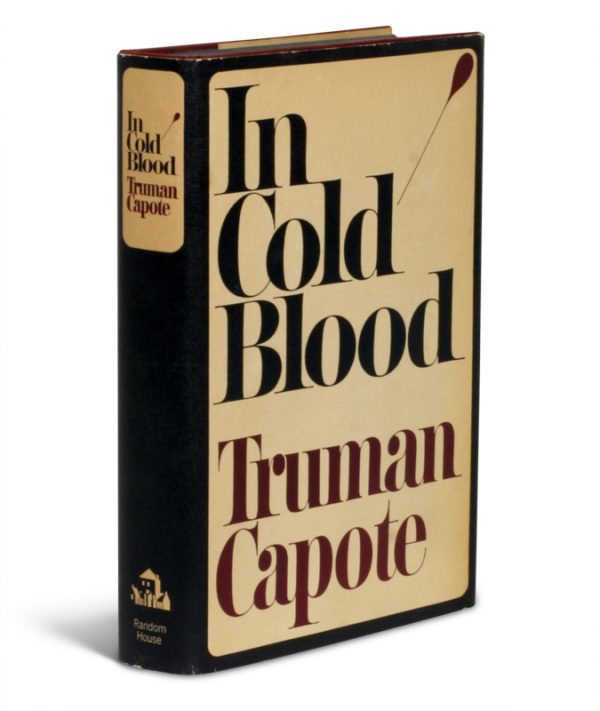
In Cold Blood
New York, 1965FIRST EDITION, FIRST ISSUE. Original cloth, original dust jacket. First issue dust jacket with “1/66” code on the front flap; “Publishers of the American College Dictionary and the Modern Library” on rear flap. A superb copy.
- $550.00
Add to Wishlist
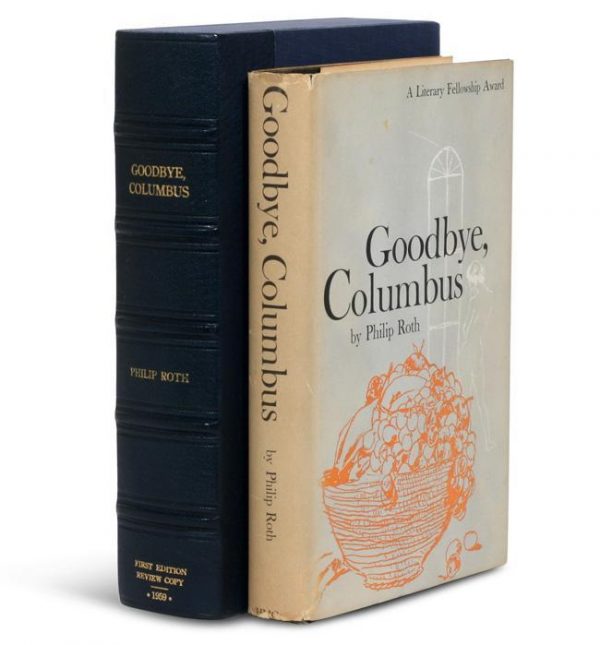
ARTHUR MIZENER'S REVIEW COPY, WITH ANNOTATIONS BY MIZENER.
Goodbye, Columbus
Boston, 1959ARTHUR MIZENER’S REVIEW COPY OF PHILIP ROTH’S MASTERFUL FIRST BOOK. WITH ANNOTATIONS BY MIZENER.
“The real novelty of Roth’s view of American Jewish Life, circa 1959, was its absence of any sense of tragedy or oppression… Hurling themselves into the American Dream, the Patimkins live a continuous daily round of sports… and of eating–gargantuan meals, served by Carlota, the maid, that smother conversation in active digestion and extra helpings.” –Claudia Roth Pierpoint, Roth Unbound: A Writer and His Books
“Professor Mizener’s best-selling biography of Fitzgerald, ”The Far Side of Paradise,” was published in 1951 by Houghton Mifflin, a decade after a heart attack ended the downward-spiraling career of the canonizer of the Jazz Age of the 1920’s.”–NY Times obituary, Feb. 15, 1988.
Octavo. Original cloth, original dust jacket. Review slip laid in. Bookplate of Arthur Mizener. Neat pencil annotations by Mizener throughout. Spine toned with small chip at head and light edgewear. Custom leather box. An impressive copy. RARE.
- $5,000.00
Add to Wishlist
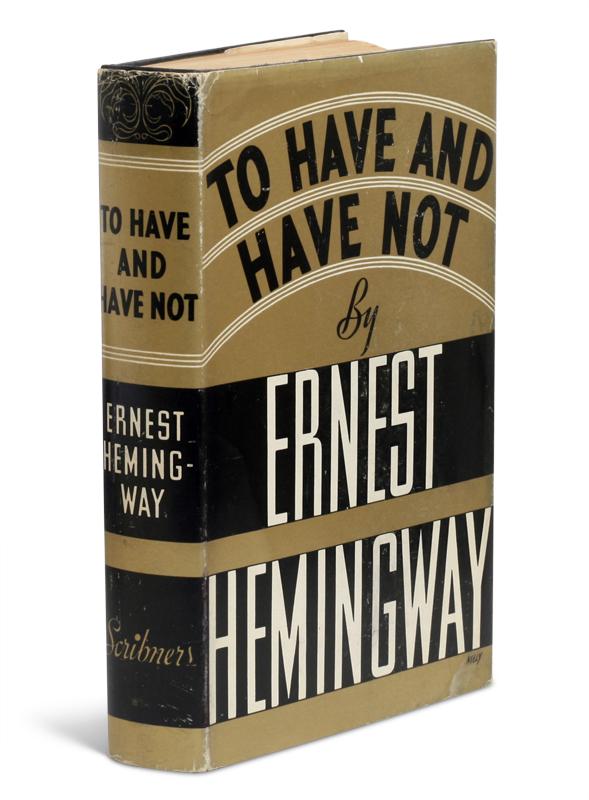
To Have and Have Not
New York, 1937“Love is all the dirty little tricks you taught me that you probably got out of some book.”
FIRST EDITION. Original cloth, original dust jacket. A very good copy; jacket bright and well preserved with light rubbing, edgewear and a patch of discoloration on verso only. A very handsome copy.
- $1,500.00
Add to Wishlist

Signed and inscribed by Allen Ginsberg
Howl and Other Poems
San Francisco, 1983SIGNED AND INSCRIBED BY ALLEN GINSBERG, WITH SUNFLOWER DRAWING. A later printing of Ginsberg’s masterpiece.
“In October 1955 Ginsberg read the first part of his new poem [‘Howl’] in public for the first time to tumultuous applause at the Six Gallery reading in San Francisco with the local poets Kenneth Rexroth, Gary Snyder, Michael McClure, Philip Whalen, and Philip LaMantia. Journalists were quick to herald the reading as a landmark event in American poetry, the birth of what they labeled the San Francisco Poetry Renaissance. Lawrence Ferlinghetti, who ran the City Lights Book Store and the City Lights publishing house in North Beach, sent Ginsberg a telegram echoing Ralph Waldo Emerson’s response to Walt Whitman’s Leaves of Grass: ‘I greet you at the beginning of a great career. When do I get the manuscript?’ Later Ginsberg wrote that ‘in publishing ‘Howl,’ I was curious to leave behind after my generation an emotional time bomb that would continue exploding in U.S. consciousness in case our military-industrial-nationalist complex solidified into a repressive police bureaucracy’ (Original Draft Facsimile Howl, p. xii).
Very nearly fine with only the most trivial wear to extremities.
- $450.00
Add to Wishlist
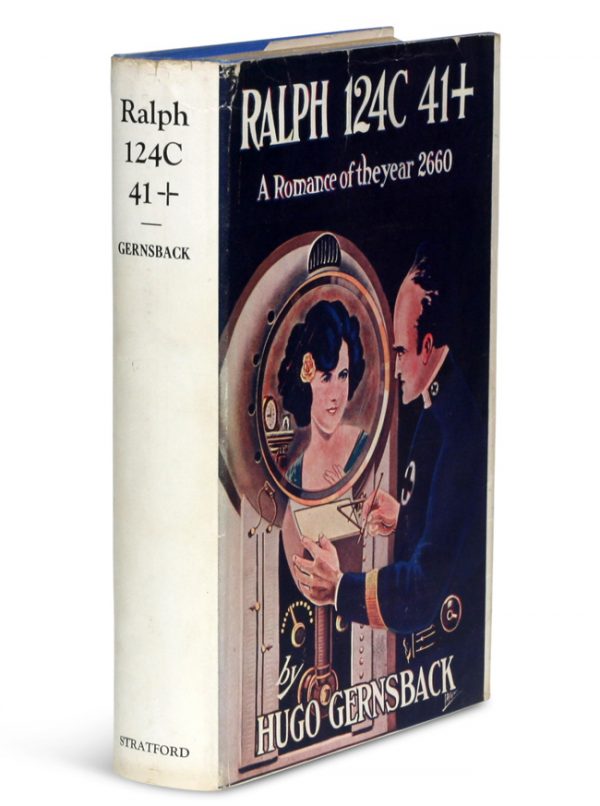
One of the foundational texts in science fiction, signed by Hugo Gernsback
Ralph 124C 41+
Boston, 1925SCARCE FIRST EDITION, SIGNED BY GERNSBACK, of one of the foundational texts in science fiction.
“In April 1911 ‘Modern Electrics’ began serializing Gernsback’s Ralph 124C 41+, written to exemplify (Gernsback’s) contention that fiction could serve to teach science… Thoroughly deficient as fiction, the story nevertheless predicts radar, microfilm and microfiche, tape recorders, television, wireless transmission of power, planet hormones, and weather control” (American National Biography).
Ralph 124C 41+ was published when many other magazines were struggling, and it led Gernsback to almost single-handedly establish a place for science fiction stories, as he allowed contemporary writers space in his science magazines. The success of these stories may have induced Gernsback to create the first science fiction magazine, Amazing Stories, which started publication the year after Ralph 124C 41+ was printed in book form. The Hugo Awards, science fiction’s most prestigious prize, were named in honor of Hugo Gernsback.
Signed on the front free endpaper.
Octavo, original blue cloth
with gilt lettering, original dust jacket. Bookplate of Roy V. Hunt, editor and artist for the science fiction magazine The Alchemist on front pastedown. Book fine with cloth exceptionally bright; original dust jacket with some tape reinforcement at verso edges; closed tear at top of front panel and very minor edgewear. Rare signed.
- $9,500.00
Add to Wishlist
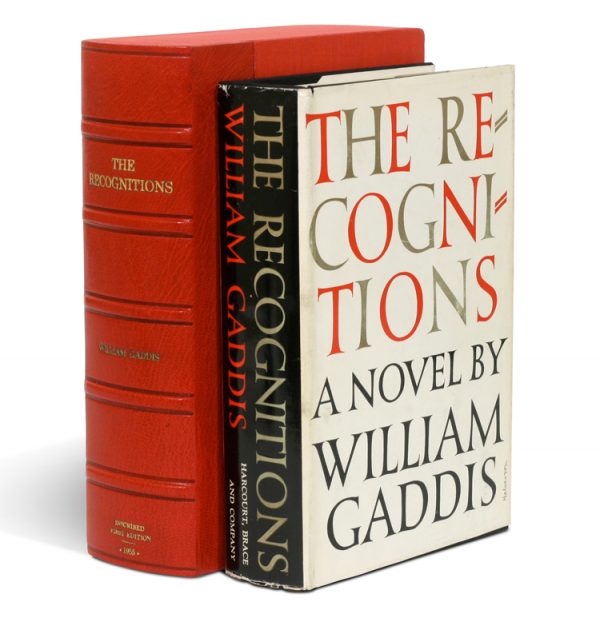
Signed and inscribed by William Gaddis
The Recognitions
New York, 1955FIRST EDITION, SIGNED AND INSCRIBED BY GADDIS on front free endpaper: “Martin / Cove ab homine (ut?) / unius libri (The Recognitions) / (and with every best wish.) / (ergo / (I mean, a child among / you taking notes / W. Gaddis”.
“As the most important precursor of many postmodernist novels about travel or movement, The Recognitions signals a change in the function of travel in fiction that is echoed in later nonfiction about travel… Since its appearance in 1955, Gaddis’ first novel has been in and out of print, initially ignored or misunderstood but subsequently praised as a central work of contemporary American fiction” (Alison Russell, Crossing Boundaries: Postmodern Travel Literature).
Original cloth, original dust jacket; custom half-morocco box. Book fine, dust jacket near-fine with very minor edgewear.
- $2,500.00
Add to Wishlist

Miller's fourth novel, in the original wrappers
Tropic of Capricorn
Paris, 1939FIRST EDITION, FIRST PRINTING of Miller’s fourth novel in the original wrappers. With the scarce errata slip tipped-in; 60 Francs on the spine and front flap. Moderate expert restoration at spine head and joints. Overall a very handsome copy.
- $950.00
Add to Wishlist
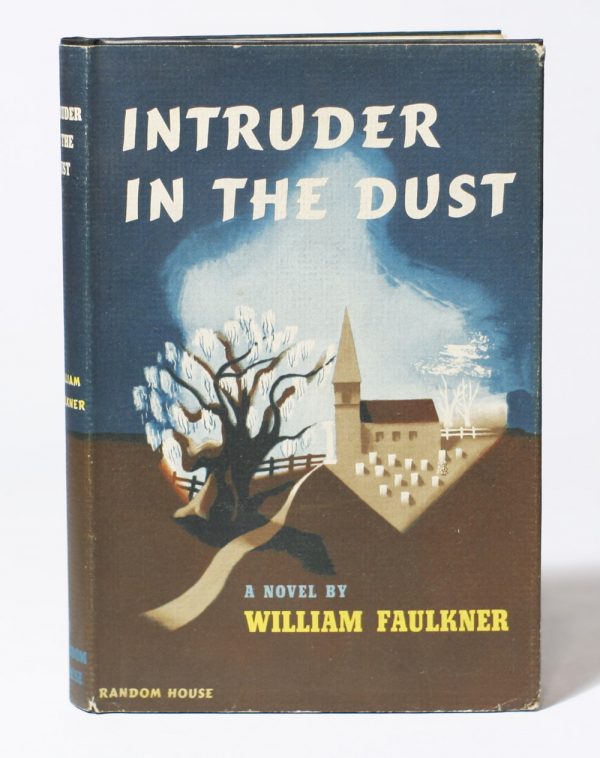
First edition of Faulkner's Intruder in the Dust
Intruder in the Dust
New York, 1948First edition of Faulkner’s powerful and influential novel on race relations in the American South, centered on the trial of Lucas Beauchamp, a black farmer accused of murder.
Intruder in the Dust “has the disturbing emotional power that [Faulkner] can generate at his best” ––Edmund Wilson
Octavo, original cloth, original dust jacket. Book fine; bright dust jacket with slightest edgewear; small spot on rear panel. A lovely copy.
- $600.00
Add to Wishlist

A Fine Copy
The Fifth Column
New York, 1938FIRST EDITION of Hemingway’s most comprehesive collection of short stories, published with The Fifth Column, Hemingway’s only full-length play.
“Five years after publishing Winner Take Nothing (1933), he collected the three separate volumes of stories and added to them a handful of other pieces– four stories written after 1933: “The Snows of Kilimanjaro” (1936), “The Short Happy Life of Francis Macomber (1936), “The Capital of the World” (1936), and “Old Man at the Bridge” (1937); one early story previously bypassed for commercial publication, “Up in Michigan” (1923, Three Stories and Ten Poems); and The Fifth Column, a play set in Civil-War Spain- to make up The Fifth Column and The First Forty-Nine Stories (1938), the only collective gathering of his stories to appear during his lifetime” (Bendixen, A Companion to the American Short Story).
Octavo, original cloth, original dust jacket; custom box. Book near fine, dust jacket bright and clean with only trivial wear. An excellent copy.
- $4,500.00
Add to Wishlist
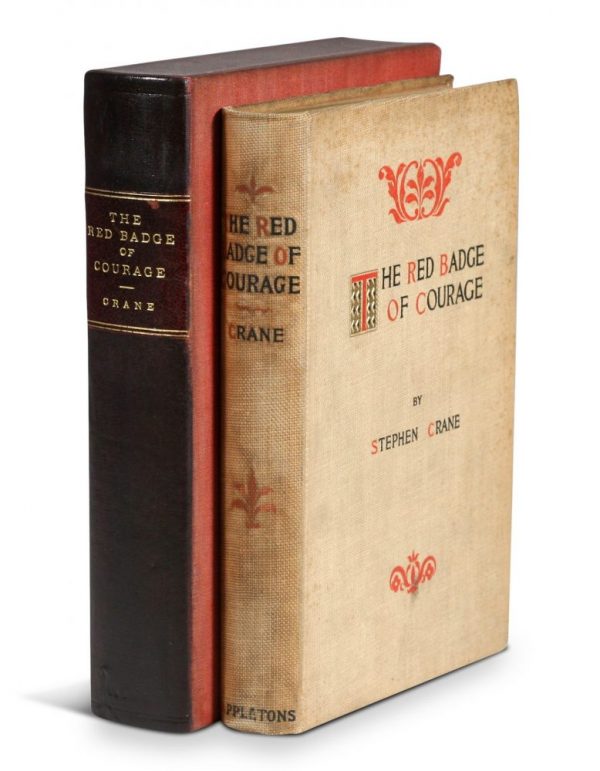
“It was not well to drive men into final corners; at those moments they could all develop teeth and claws.”
The Red Badge of Courage
New York, 1895FIRST EDITION, first issue of one of the most influential works of American literature.
The Red Badge of Courage, Crane’s “most popular work, and the classic American treatment of the Civil War… interprets military experience through the perspective of an untried volunteer who receives his wound-badge while fleeing from a battle but eventually proves himself by fighting bravely. The book was so convincing that a Union colonel said he recalled serving with Crane at Antietam. The epic sweep of the novel arises in part from Crane’s ability to convey a common soldier’s rite of passage from fear to confidence. It also arises from Crane’s ability to blend a variety of literary modes, including irony, the mock-heroic, comedy, and the grotesque. Crane’s strikingly original use of colors, partly inspired by Goethe and already on display in Maggie, became a trademark, as did his penchant for offbeat insights and arresting turns of phrase. The autumn 1895 publication of The Red Badge of Courage in the United States and England brought Crane international fame as the book went into fourteen printings within the year” (American National Biography). BAL 4071.
Octavo, original buckram stamped in red, black, and gilt; early custom box. Book with foxing to cloth edges and toning to spine. Text exceptionally clean. With Appleton ads in rear.
- $4,500.00
